The length of a tree does not just depend on the seeds and soil used but the size of the container you plant it in. Without space to grow, it will end up as a shrub.
Similarly, your organization’s progress will directly depend on its spare capacity. Without time, energy, and resources to invest in growth, your business will stay the same.
But how can you control these factors? The solution is capacity planning!
The Nitty-gritty of Capacity Planning
Capacity planning is the process that determines production capacity and workforce needs to ensure that your supply chain is equipped to meet the demand. It will help your business to grow, identify bottlenecks, create better products, processes, or designs, and mitigate risks.
Other benefits that capacity planning brings to a business are:
- Team availability.
- Skills inventory analysis.
- Identification of skill or process gaps.
- Prevent scope creep.
- Help in making informed hiring decisions.
- Enhance transparency and accountability.
Organizations need an actionable capacity planning procedure that we shared in this blog to reap these benefits. It will help you forecast the resource requirements, workforce skills, and requirements that otherwise will be overwhelming to predict.
The process will be easier to develop and share for you with our 15 stunning capacity planning templates. These PPT designs will help the audience understand your approach and remove the guesswork.
Let’s dive in!
Access Present Capacity
First, you need to measure your current resource capacity — the number of deliveries that you can make in a given time, orders that can fit onto the available trucks, time taken by your fleet manager to plan deliveries, and more. Check out these amazing templates and measure the output for any industry, including automobile plant, steel sector, power company, cinema, or restaurant.
Template 1: Capacity Planning PowerPoint Presentation Slides
Evaluate the actual use of multiple resources across your business with this intuitive PPT Deck. It contains project capacity planning, weekly schedule, Work Breakdown Structure (WBS), cost management, and pending task templates to support your business. Download it now!
Template 2: Team and Individual Capacity Management Chart
This template is helpful for managers to evaluate the capacity of the entire team and individual members. It includes pre-designed and easy-to-edit charts that will make the capacity management process professional and quick for you. Grab this PowerPoint Slide now!
Template 3: Six-step Capacity Planning Process Design
Use this template to highlight the critical parameters of a capacity planning process — current utilization, an estimate of future growth, sustainability, strategy creation, and purchase. Download now and captivate your audience.
Template 4: Capacity Planning Resource Utilization PPT
This template illustrates your manufacturing, delivery, production, resource, and lead requirements. It will allow you to analyze key data points and report the possibility of expansion or reduction. Download it right away!
Template 5: Product Capacity Planning PPT Design
Plan and monitor the current production cycle(s) in a meticulous way with this capacity planning template. It showcases process elements like machine time, space, and labor details that help you manage seasonal demand fluctuations, quality, and expenses. Download it once and use it as many times as you want.
2. Analyze the Measurements
After getting accurate measurements, you can analyze this information to determine if you have insufficient or excess capacity or have utilized your resources comprehensively. Our well-designed capacity planning templates will help you evaluate precise numbers and make demand forecasting easier.
Template 1: Capacity Planning Worksheet For Scrum Team
Calculate your scrum team capacity by multiplying the number of members by the productive days. It will help you highlight scum process components, sprint planning, demo, backlog grooming, repeating scrum, etc. You will be able to compare the capacity of participating teams with each other and the members among them using this presentation design. Get it now!
Template 2: Project Participants Capacity Planning PPT
With this capacity analysis template, you can evaluate and manage the performance of analysts, developers, testers, and managers appointed for a particular project. This design will help you measure the bottlenecks and take corrective actions. Download and put it in your capacity planning presentation now!
Template 3: Resource Utilization And Capacity Management Presentation
Systematize your company's resource allocation with this capacity management template. It will help you record the efforts and resources utilized per week in various projects. Analysis and present this data to make informed decisions regarding resource investment, project, and capacity management using this PPT Template. Download it now to streamline the process!
Template 4: Cost Management In Capacity Planning PPT
This capacity management template determines the gap between your actual and estimated cost. It includes an analysis of various expenses like staff, service, material, hardware, rent, and others. Grab it today to manage the capacity planning investment and budget!
Template 5: Two Weeks Sprint Capacity Planning and Calendar Design
This presentation design will help you plan the capacity of the sprint meeting two weeks in advance. Manage and allocate the workforce in an intelligent manner to keep the project ongoing without interrupting daily sprint schedules with this PPT Design. Use it as your mini or quick dashboard to track meeting attendance with date and weekdays written. Download this template now!
3. Formulate the Plan
This is the final stage of the capacity planning process, where you have to gather essential information to formulate a comprehensive management strategy. Make precise calculations to check the money required to fund a new project, hire employees/workers, upgrade machinery, or add assembly lines. This stage will help you understand the likely outcomes to make profitable decisions. Our well-thought-out capacity planning templates will ease your journey surely.
Template 1: Capacity Strategy Planning Templates
With this template, scale your business capacity to meet customer demand by creating a persuasive strategy. The design includes a structured graph diagram with a six-month estimation. Download it now!
Template 2: Capacity Strategy Planning PPT Design
This is another capacity planning template that you can use to pick the right strategy among lag, lead, and match. With this, you will feel it easy to discuss estimated demand, inventory, workforce, production quantity, and more. Click the link below to get this customizable presentation design now!
Template 3: Major Steps of Capacity Planning Cycle
Share the understanding of the complete capacity planning process with your peers to prepare them for future job roles using this PPT Slide. It demonstrates the capacity management cycle’s three phases — discover, examine, and plan — and its steps. In this PowerPoint graphic, you will find actions like discovering capacity requirements, current utilization, examining existing capacity, actual vs. committed outcomes, ‘what if’ scenarios, analyzing future capacity, and sustainability decisions. Get it now!
Template 4: Capacity Management PPT Presentation Slide
Pick this detailed capacity management template to show your overall task status, budget, and pending items. With this all-inclusive template, you will be able to forecast the capacity increase/decrease. Grab it today to create an actionable capacity planning strategy.
Template 5: Future Capacity Planning Presentation Design
Use this PPT Graphic to anticipate the future capacity requirements of your organization, project, or process. It allows the user to allot time for the completion of each activity. With this, you will be able to select, identify, measure, and compare your business capacities. Download it now!
In the end
Whether it’s a project or everyday operation, capacity planning will help you create a delicate balance among real-time employee availability, budget, and demand. Plus, our handpicked templates will help you create a meticulous capacity plan presentation. So you can use them for the manufacturing and service industry, retail and commercial sales sector, IT, and government agencies.
SlideTeam’s professionals have gone above and beyond for researching each slide. These remarkable designs are easy to customize, compatible with leading communication applications, and content-ready to save your time and effort. So without further ado, download these cherry-picked templates.
P.S: You can also improve your company’s existing operations, activities, and framework by exploring our capacity development templates featured in this guide.
FAQs on Capacity Planning
1. What are the steps in capacity planning?
Capacity planning is the process of determining the resources needed to meet future demand. Here are the steps for capacity planning:
- Define the objectives: This includes understanding the business goals, identifying the resources required to meet those goals, and determining the timeline capacity planning.
- Gather data: The next step is to collect data on current and projected demand for the product or service. It comprises analyzing historical data, market trends, and customer feedback.
- Analyze data: Examine the collected data to identify patterns and trends. This will help in forecasting future demand for the product or service.
- Determine capacity requirements: It identifies the resources needed, such as equipment, workforce, and technology, to meet future demand based on analysis.
- Develop a plan: Design a strategy to meet capacity requirements along with investments, timelines for implementation, and budget.
- Implement the plan: The implementation process comprises hiring new staff, procuring equipment, upgrading technology, and making necessary investments.
- Monitor and adjust: With changing business needs or market conditions, make necessary adjustments in the implemented plan to meet the business goals and requirements.
2. What are the 4 types of capacity?
The three types of capacity planning are:
- Strategic capacity planning: Long-term capacity planning aims to align an organization's overall business strategy with its capacity planning strategy. It involves forecasting demand for products or services over several years, determining the resources required to meet that demand, and creating plans to acquire or expand those resources.
- Tactical capacity planning: This type of capacity planning is for the medium term and aims to balance demand and capacity for the included period. It involves forecasting demand for products or services for months to a year and adjusting capacity, such as workforce levels, production schedules, or outsourcing work to meet demand.
- Operational capacity planning: It is short-term and involves managing day-to-day capacity, making adjustments to ensure that resources are used effectively and efficiently, and addressing bottlenecks or other constraints in the production process.
3. What are the 5 capacity management strategies?
The five capacity management strategies are:
- Leading strategy: Proactively increasing capacity in anticipation of future demand. It is a long-term strategy that requires significant investment and planning but can help an organization stay ahead of its competitors and avoid capacity constraints.
- Following strategy: Adding capacity in response to increased demand. This short-term strategy involves reacting to changes in demand and helping organizations avoid stockouts and lost sales, but it results in higher costs and longer lead times.
- Tracking strategy: Adding capacity in small increments to match changes in demand. This more moderate approach involves monitoring demand closely and adjusting capacity as needed.
- Capacity utilization strategy: Maximizing existing capacity to meet demand through scheduling, process improvement, and reducing waste. It helps avoid costly investments in new capacities.
- Efficiency strategy: Reducing the capacity required to meet demand using product design, process improvement, and outsourcing techniques. It helps organizations reduce costs and improve profitability but increases risk and reduced flexibility.


![[Updated 2023] Top 15 Capacity Planning Templates to Meet Customer Demand](https://www.slideteam.net/wp/wp-content/uploads/2021/09/with-logo--1013x441.jpg)


 Customer Reviews
Customer Reviews


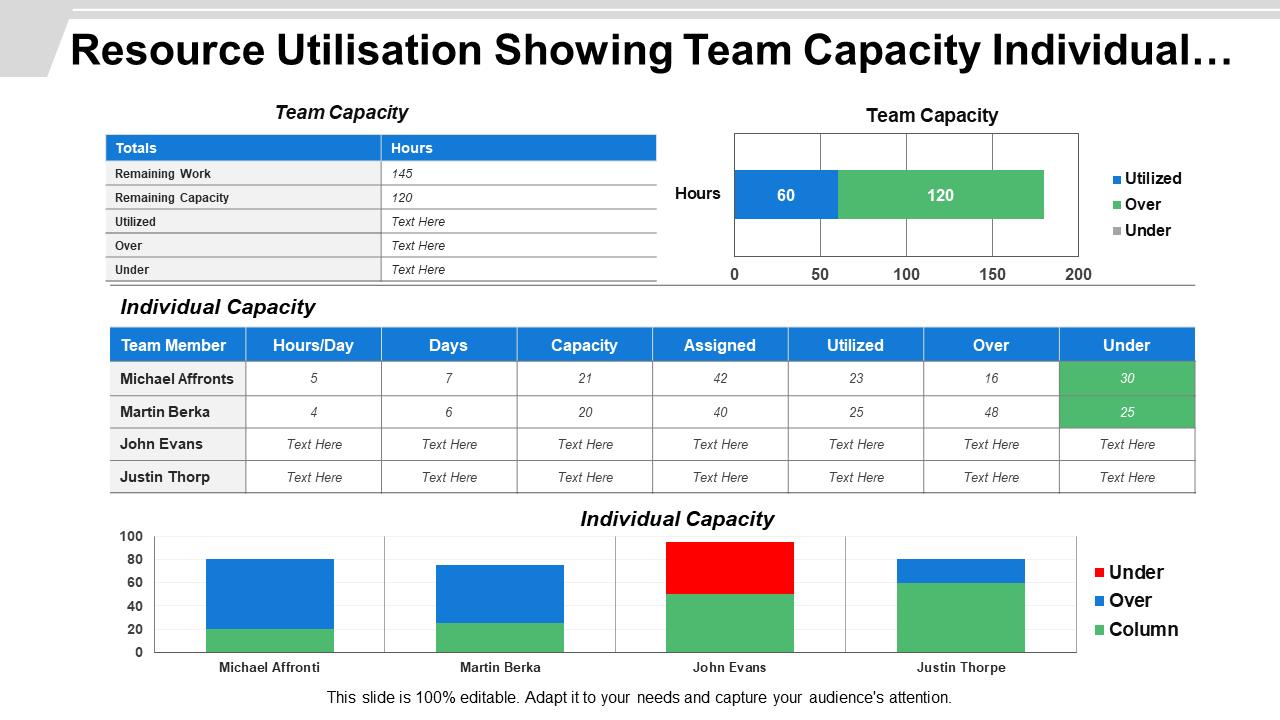
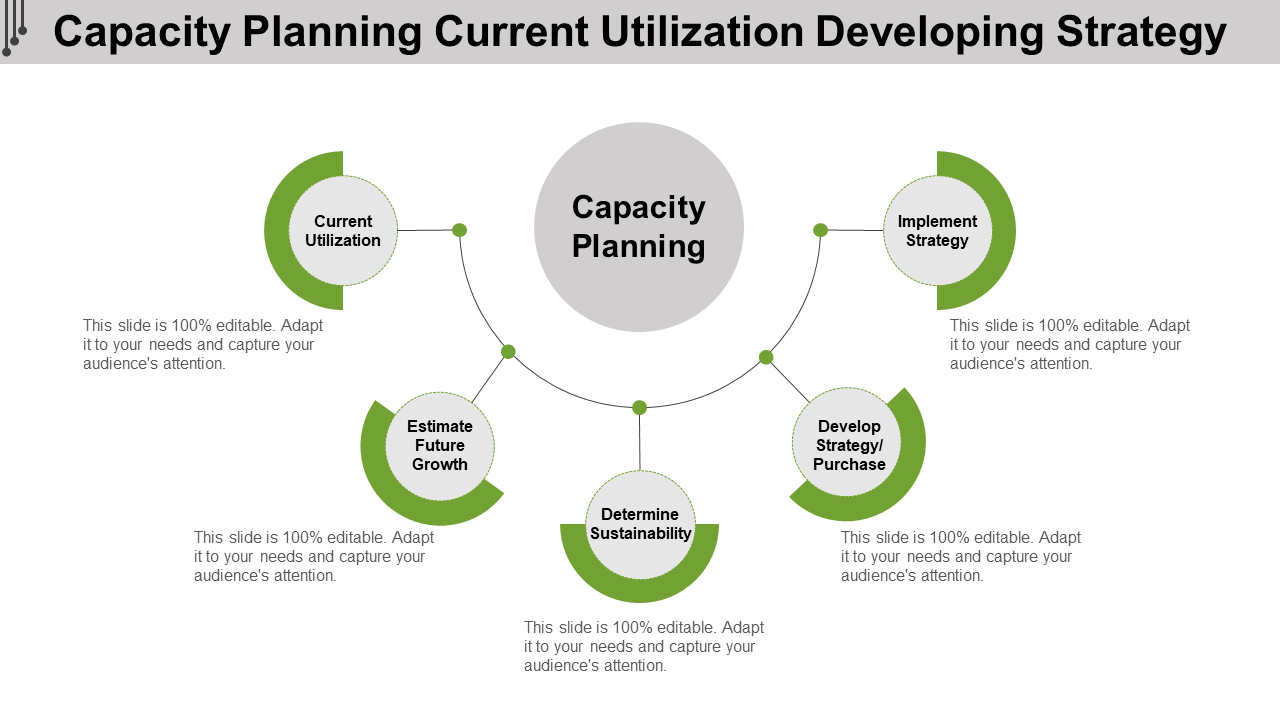
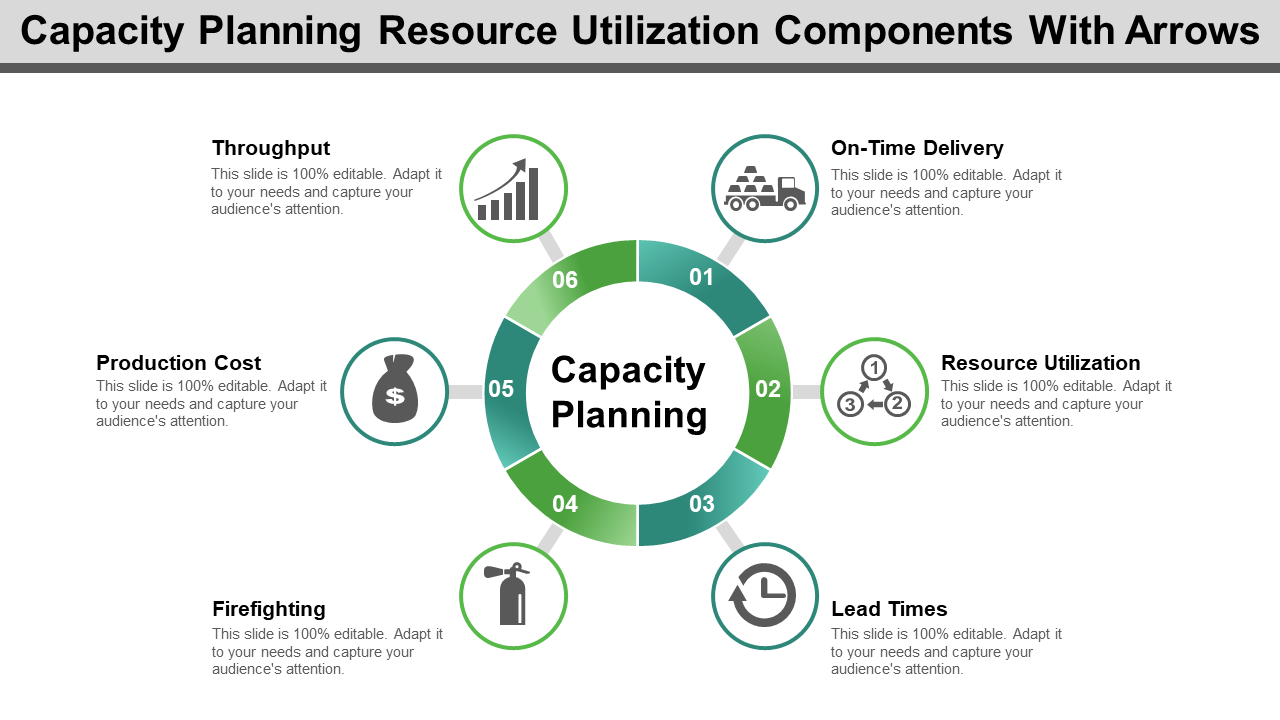
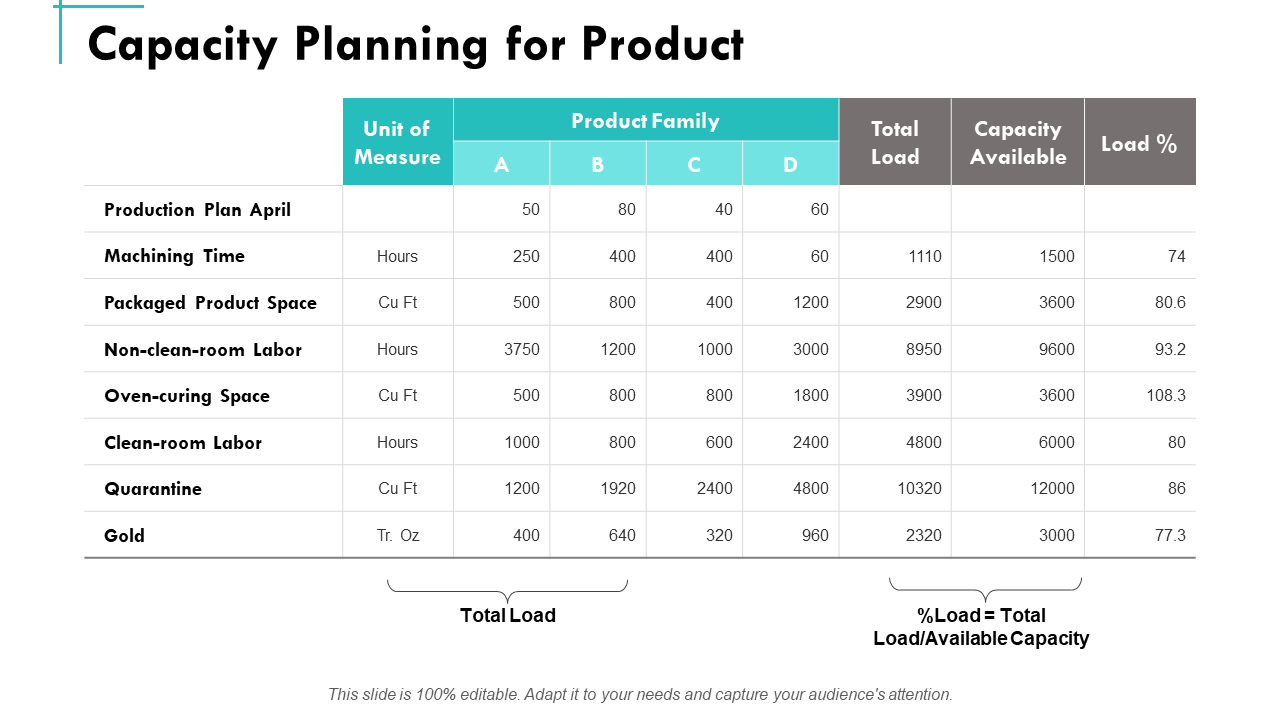
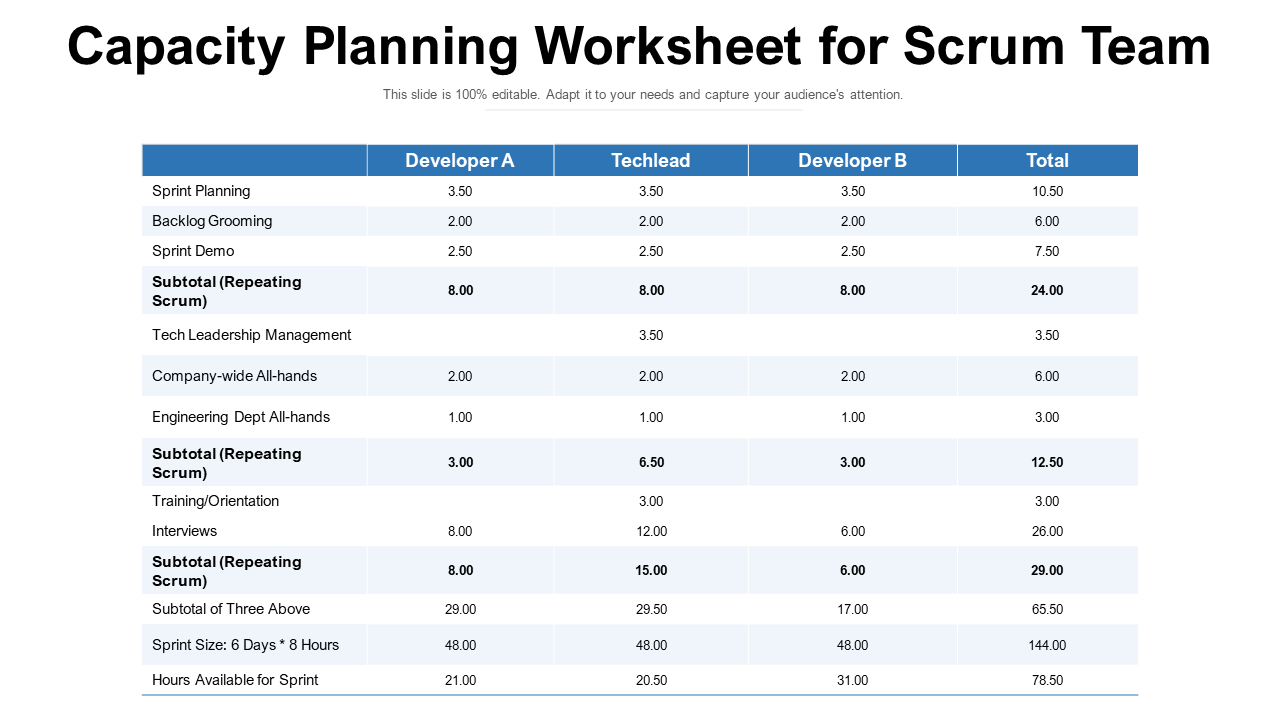
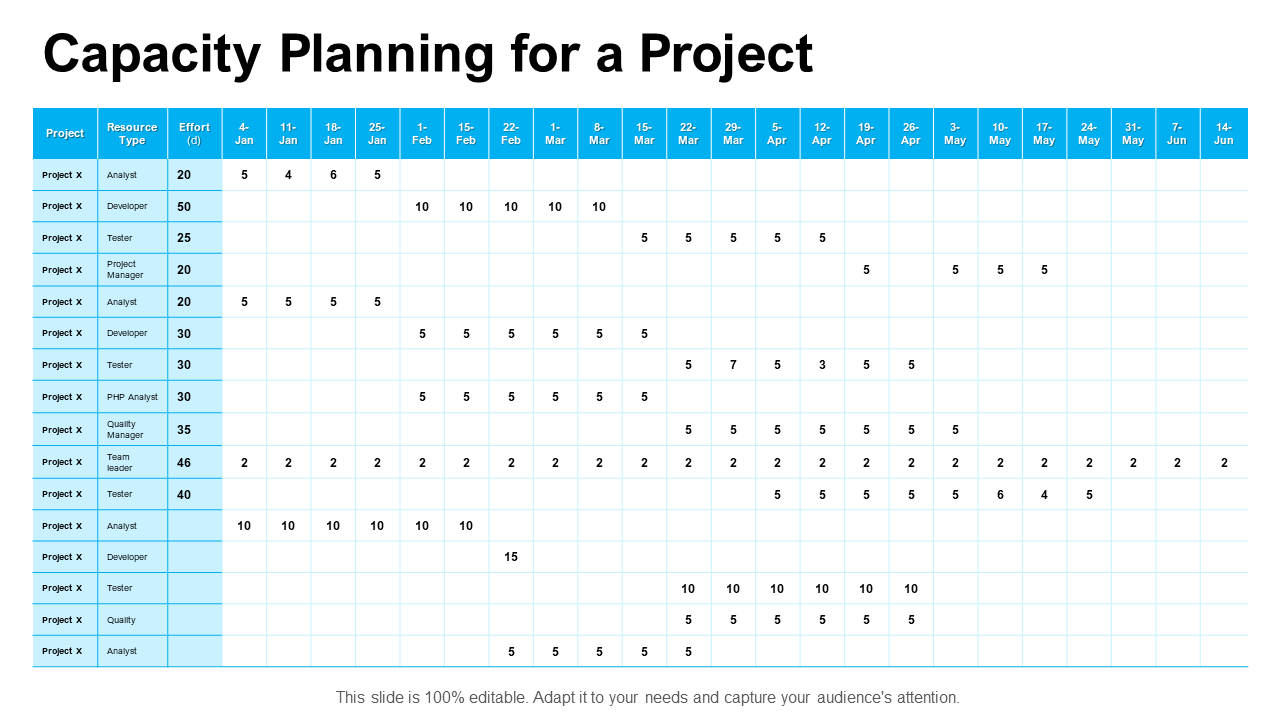
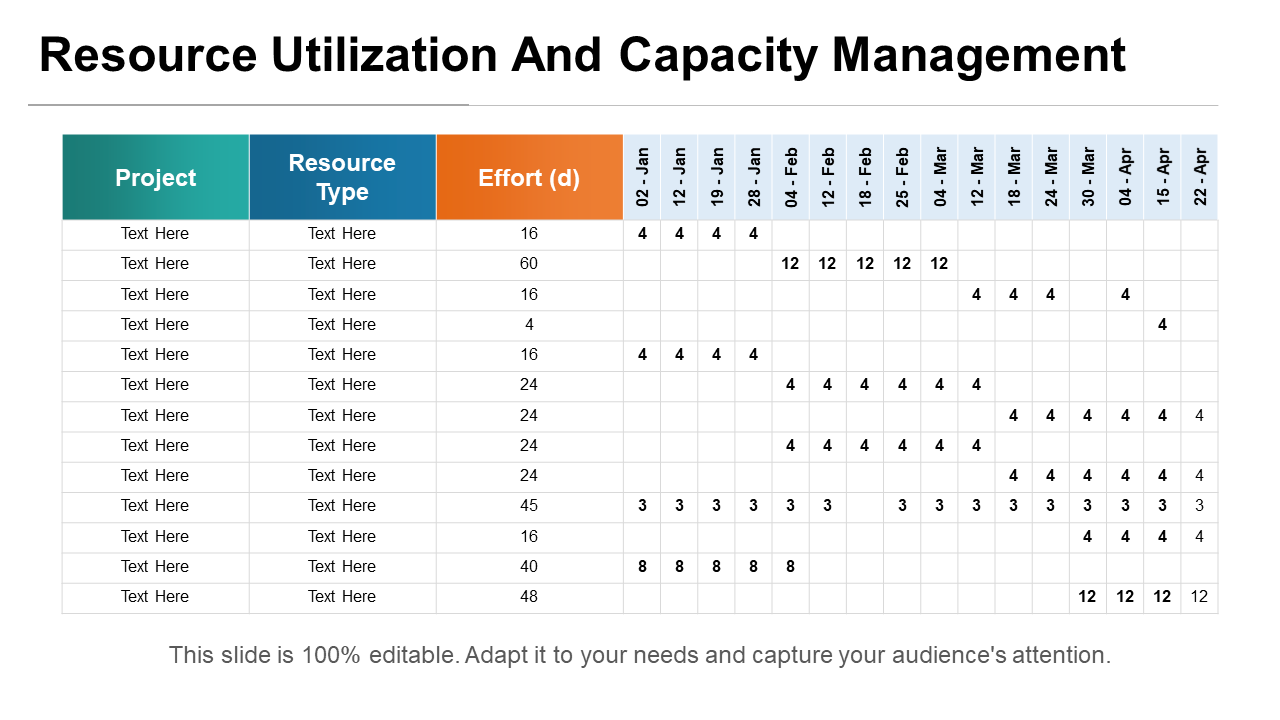
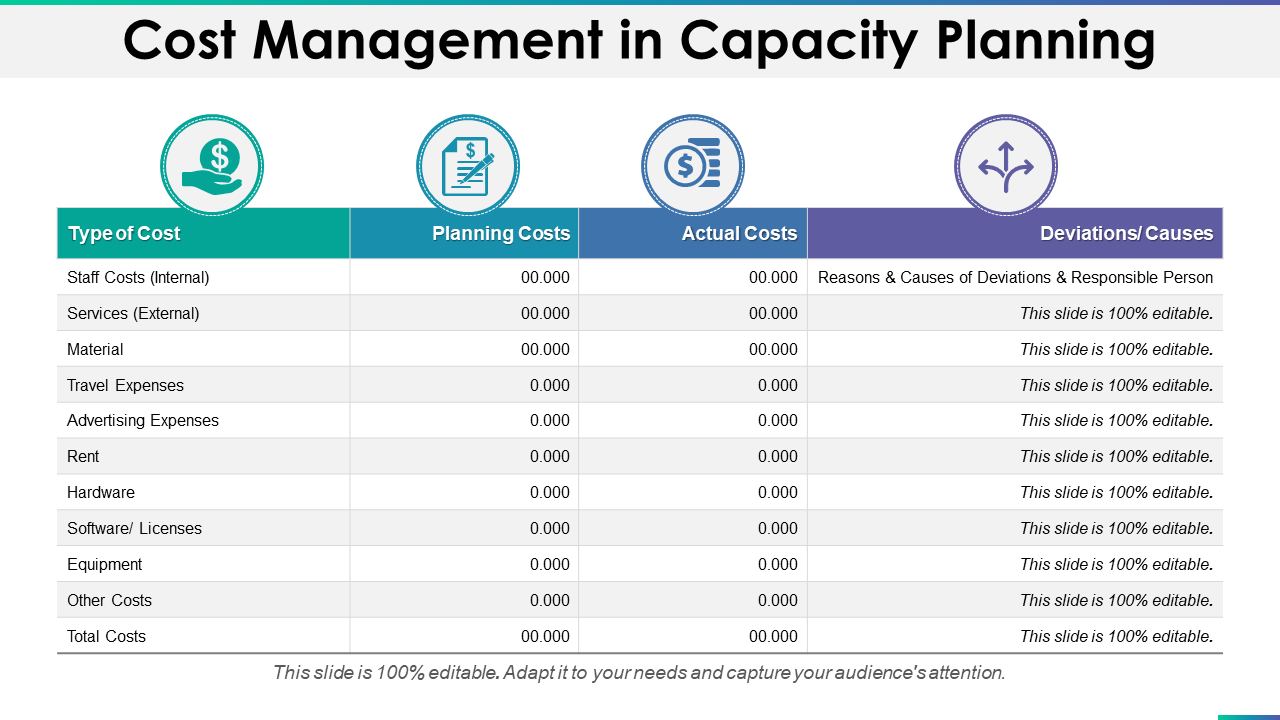
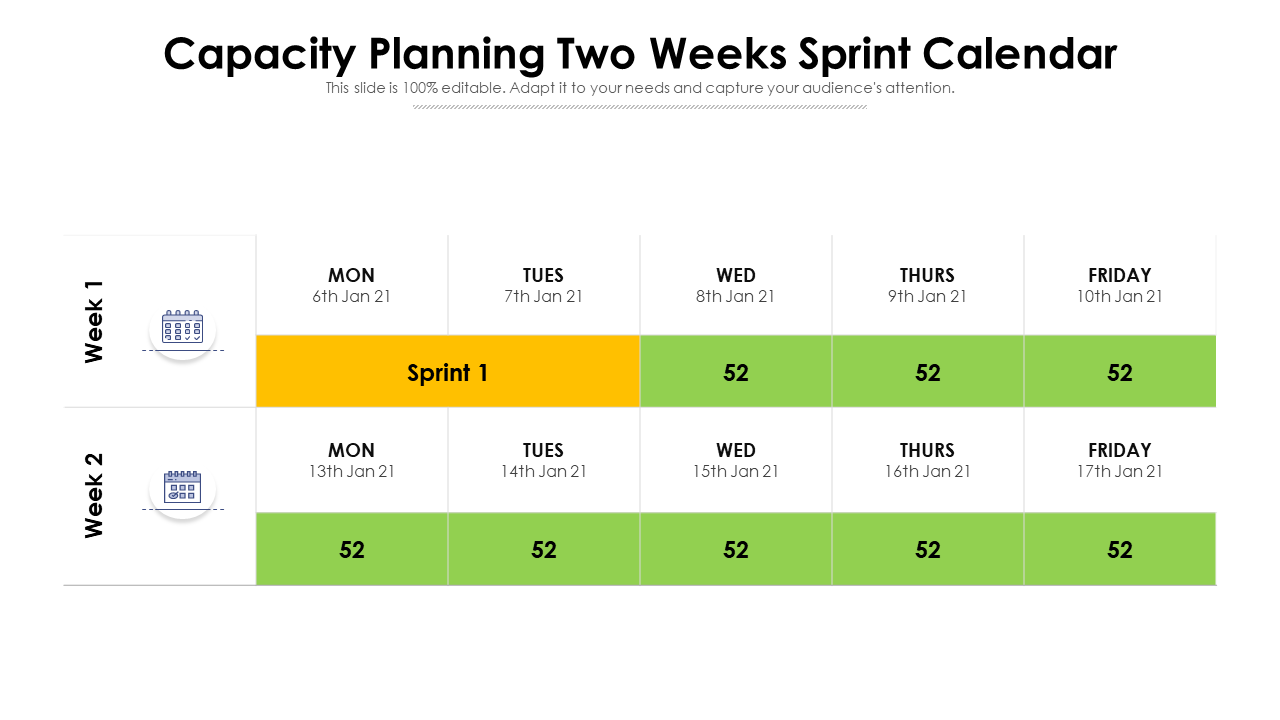
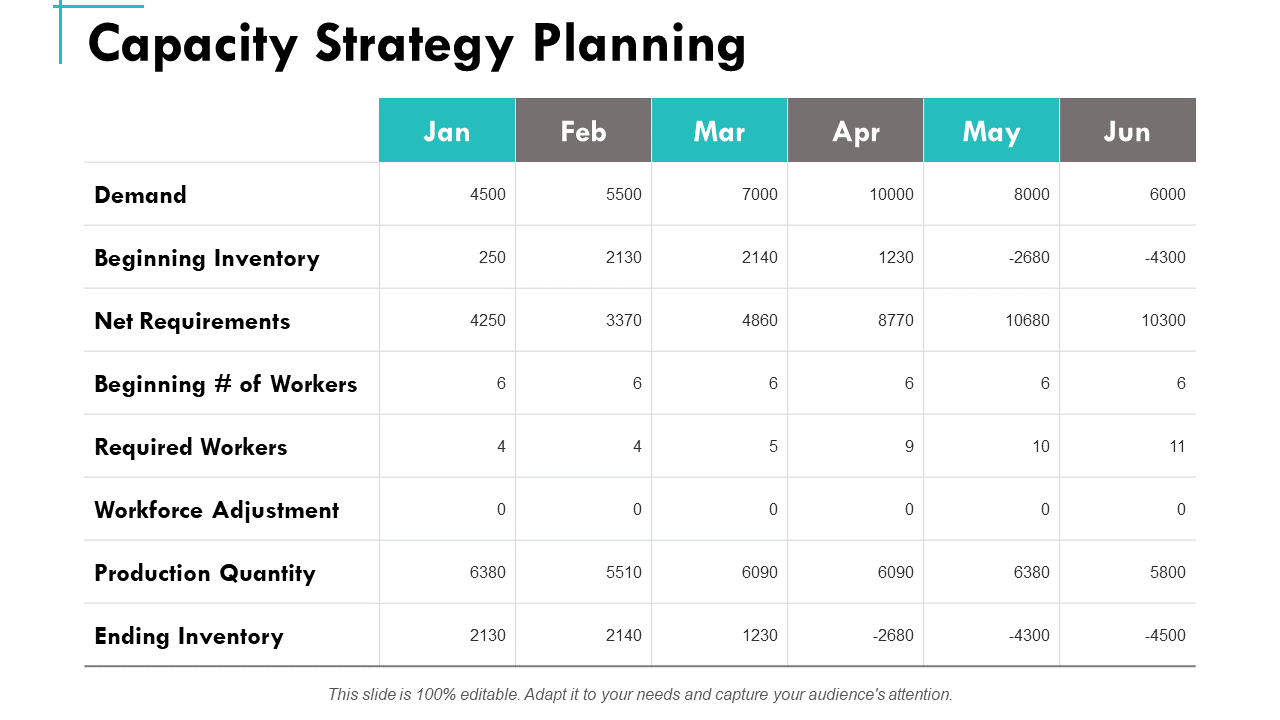
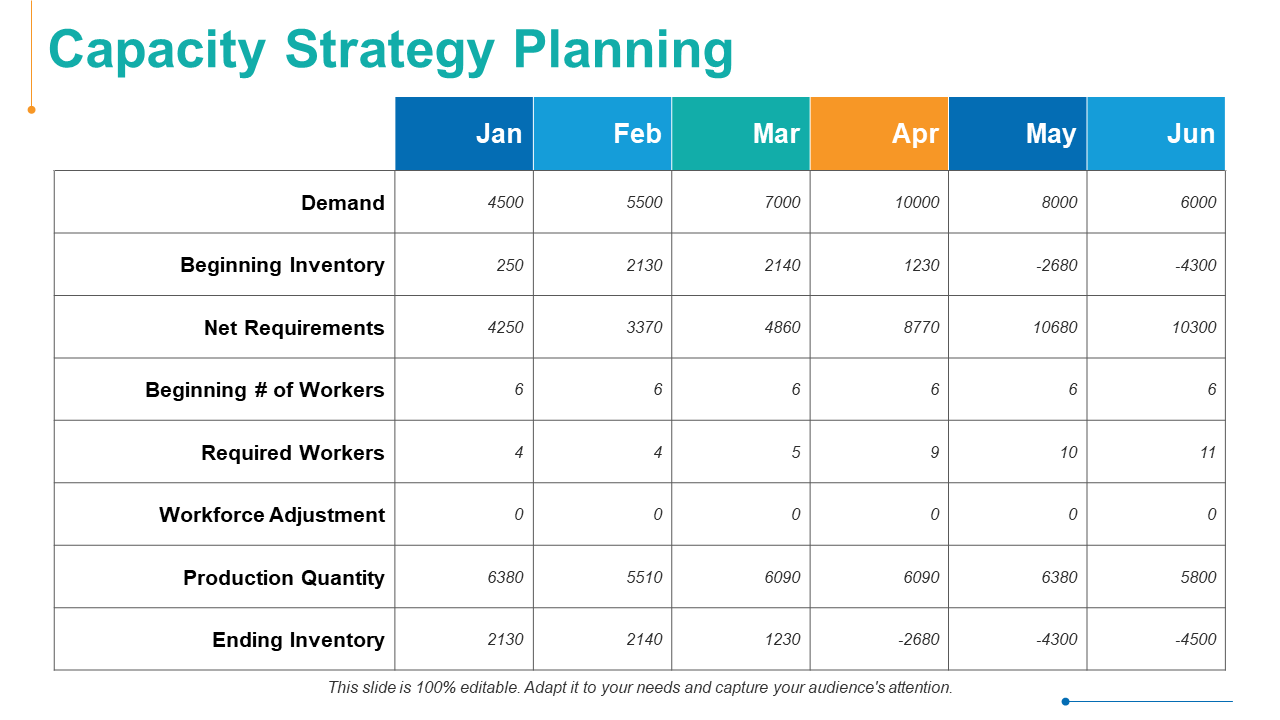
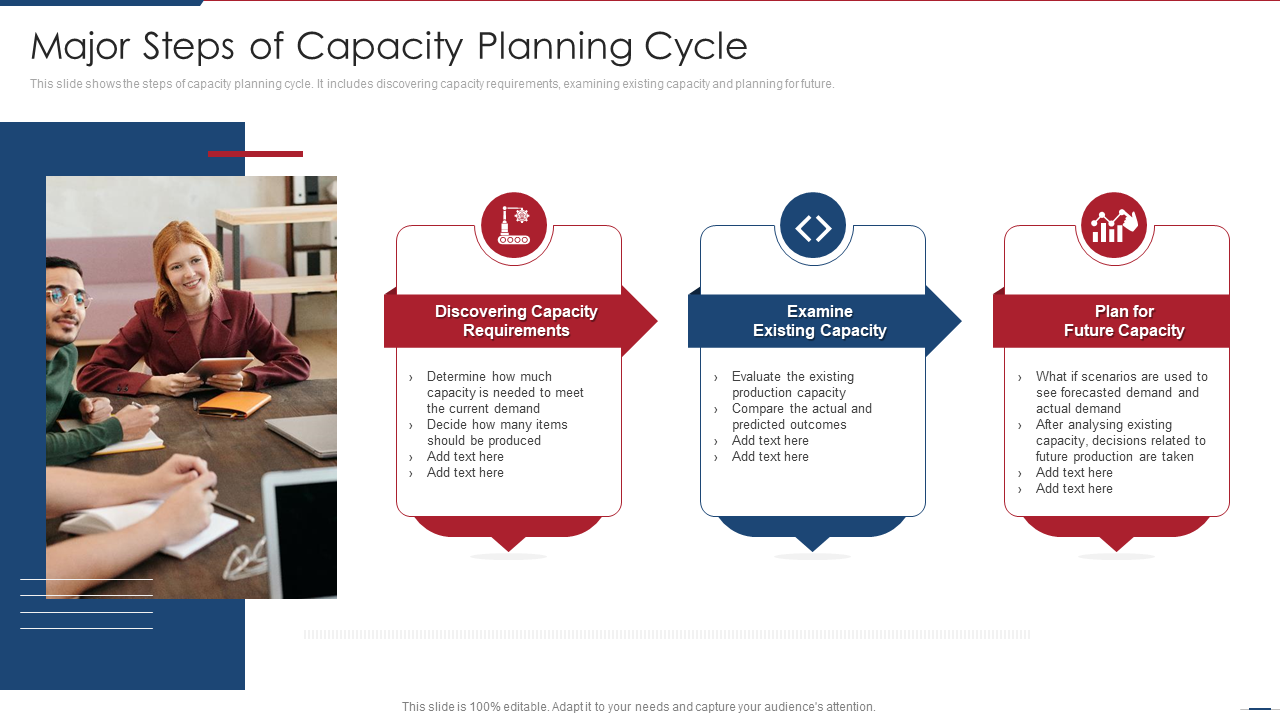
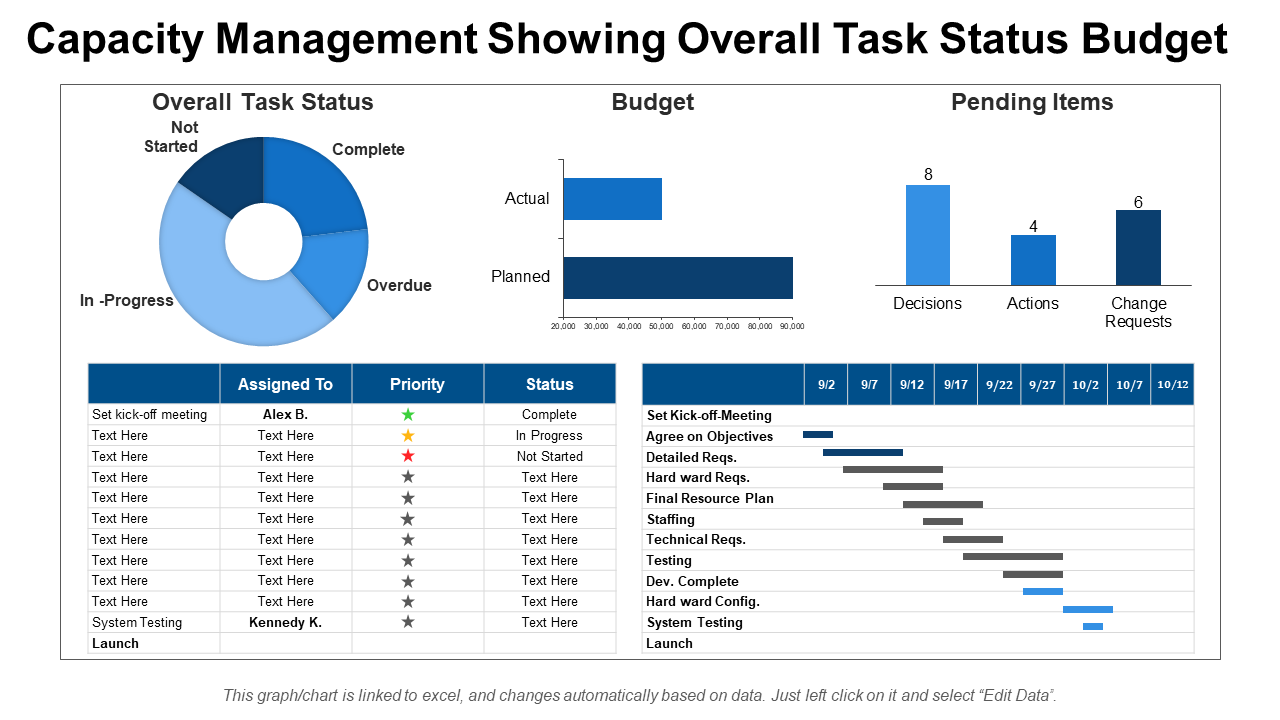
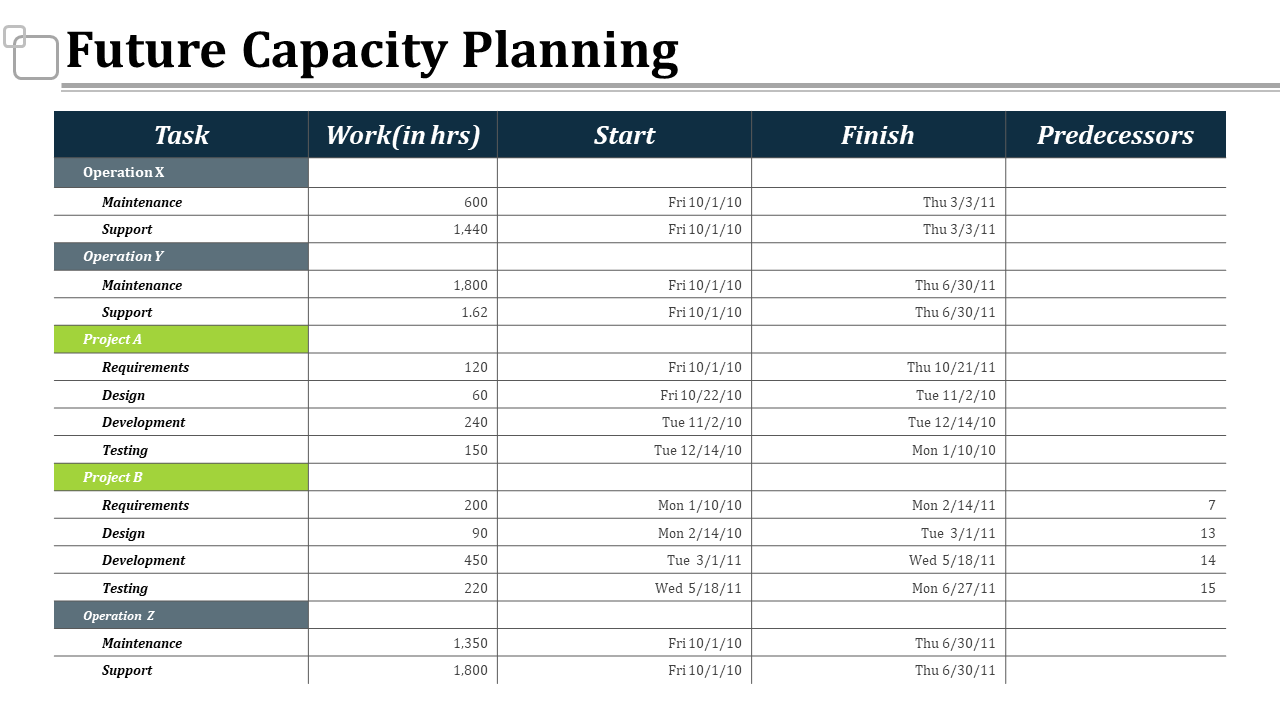



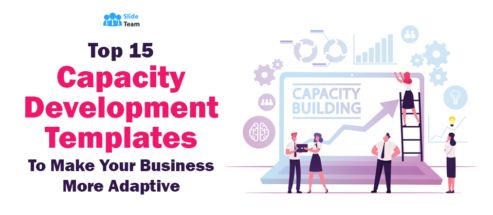


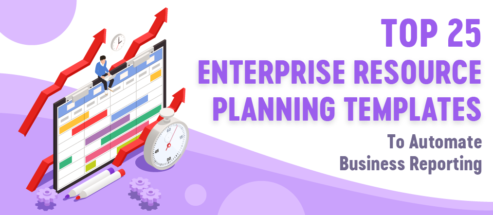














Consultar si la información de Capacity Mgmt. es un libro o son templates en excel, estoy interesada, cual es el costo.
Gracias, saludos.